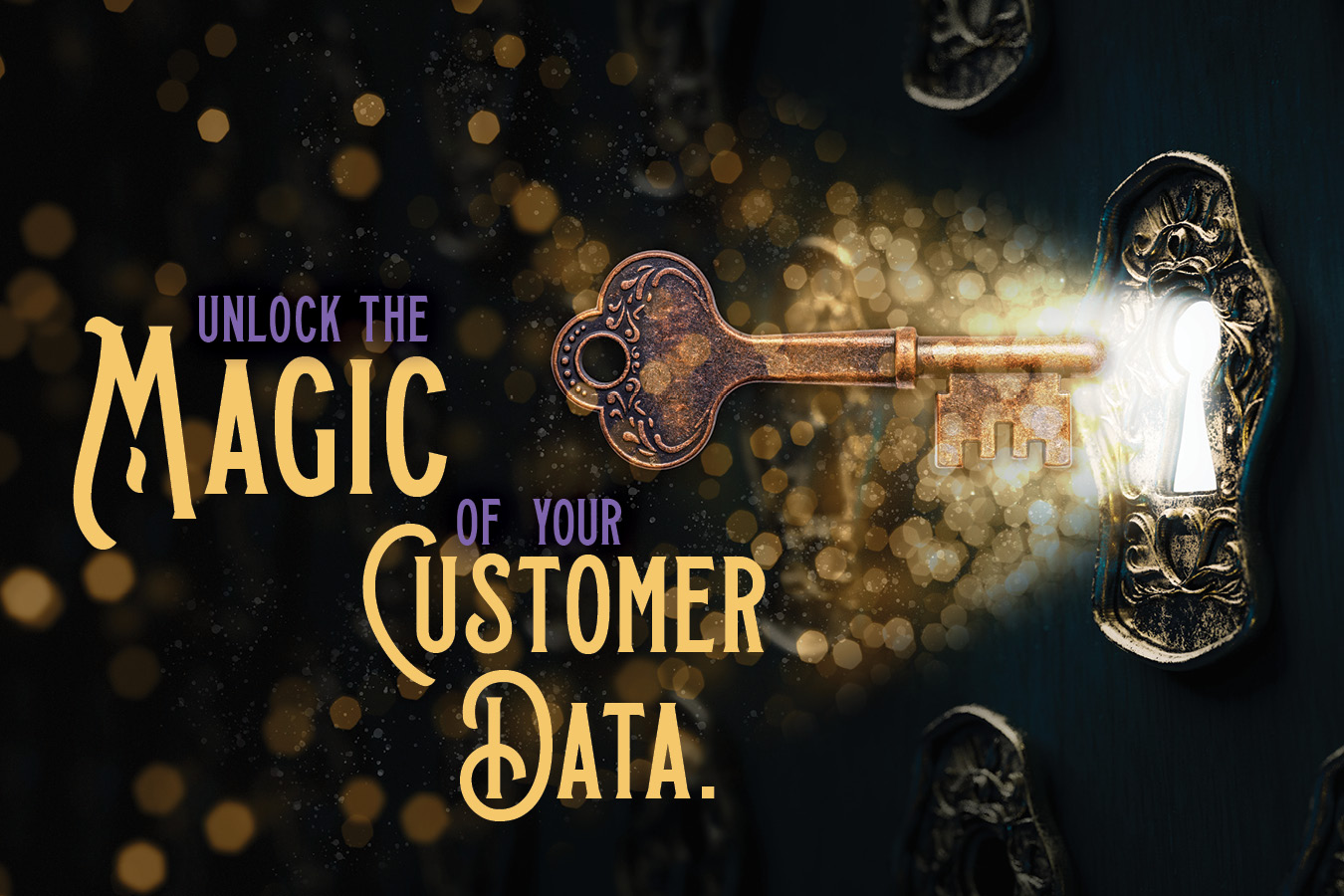Whether it’s a simple spreadsheet or a CRM system, a well-managed client database is a treasure hidden in plain sight. Your database can store and track interactions with your customers, improve your customer support, and powerfully automate and personalize your marketing. Your customer data is powerful, magical and is the key to connecting with your customers.
With patience, creativity, some discipline and Excel (really, Excel!) you can build a basic customer database. If you can produce a simple Excel spreadsheet, you can create a valuable, powerful business tool for managing your clients. Entering your data in a spreadsheet opens the door for reporting, filtering, and using the customer data to accelerate your company’s growth.
Four steps to get started:
- Identify and create headings – You can begin with the basics and grow your data as you go. Step one is to identify essential information including company name, contact first and last name, title, mailing address, phone number, email address, and assigned sales rep. You can include special codes for contract type or sales level, prospect or customer, or assign an A, B, or C code for the level of marketing they will receive. Be sure to use a “Notes” column for miscellaneous information about individuals.
- Maintain and update your information – Start with the information you need about your customers to set a solid foundation for your client database. However, the key to success is making this database a living record of what is going on today. Studies show that client data churns 30% in a year, so gathering your information on the front end is just a starting point. If your customer changes their email address or a client gets promoted with a title change, add and edit the information.
- Show value, train and set expectations with your team – Salespeople generally are not known for excelling at administrative work like data entry in a system. (They are great at getting out there and talking to customers, so we’ll give them a pass on their interest in internal systems!) However, most reps are happy to enter and update client data when they see the value of the system. Personalized marketing that warms a conversation is a huge benefit for a sales rep.
- Set standards for data entry – Along with the “just do it” mantra about entering data, set the standard for naming conventions, formatting, and how your team enters the data. All caps or upper and lower case? First name in the first name field or the whole name in the name field? We’ve all heard “garbage in, garbage out,” because it’s true. A client database won’t propel your business if it’s dated and full of errors.
Are you ready for a CRM?
While a spreadsheet is a fantastic way to begin, your company may have outgrown spreadsheets as a customer management system. A CRM software solution will empower your team to manage customer information and data, streamline the sales process and effectively manage prospect and customer relationships. Following are five signs that investing in a CRM is a good decision.
- You’re losing sales to the competition.
- Your clients have several points of contact.
- You’re using intuition to make business decisions without data to support them.
- You don’t have visibility to what your sales team is doing.
- You can’t identify patterns and behaviors of your customers’ buying habits.
No matter where you are in implementing your customer database strategy, follow these four best practices to ensure effective customer data management.
- Keep you customer data secure. Data thieves target small businesses because they know oftentimes there are no safeguards in place.
- Install and update data protection software
- Use a secure network
- Encrypt all your customer data
- Use strong and long passwords – or even password phrases – including symbols, numbers and capitalization
- Train your employees about your data security measures and be sure they work by the rules
- Be transparent and ethical about your information gathering. Trust is a major component of building customer relationships, so transparency is critical. Give customers an “opt-out” option, be direct and straightforward if you are gathering data and develop a privacy policy that is displayed clearly on your website.
- Think strategically about what data points you really need. While clean, informative data is a game changer, overwhelming amounts of information that isn’t actionable is a waste of time and resources. Every data point should have a clear purpose. Don’t collect data just because you can; collect it because it will help you further your business goals.
- Back up your data! Human error, hardware failures, viruses, natural disasters, hackers….in a perfect world we wouldn’t worry about these things. Wouldn’t it be great if we lived in a perfect world? Backing up your data avoids panic and loss. Make it a regular part of your data management strategy.
Whether you’re just getting started with developing and managing your customer data, or your customer database is in great shape, this is the first step in creating personalized marketing programs that are up to 600% more effective than traditional generic marketing.
Need help magically transforming your customer data? Lawton has a team of experts who will help. Connect with us today.


